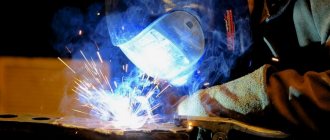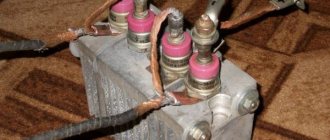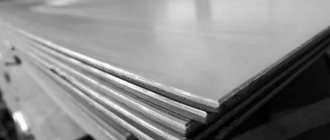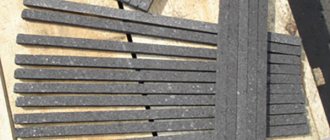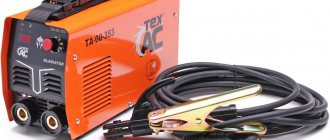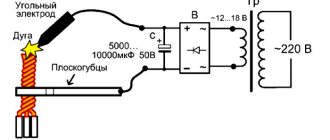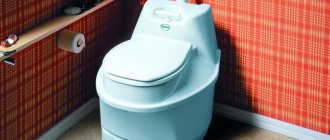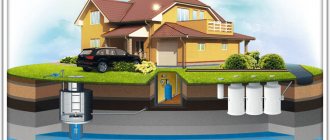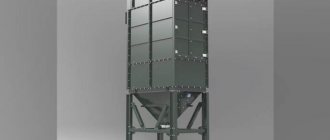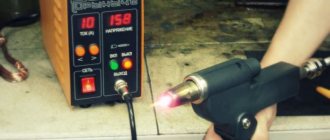Home / Electrodes
Back
Reading time: 3 min
0
4523
Welding machine users mainly use low-melting steel rod electrodes.
But for non-ferrous metals or U-shaped welds, a carbon rod is required.
You can use it to cook, cut and melt. It's time to learn about the benefits of this type of product.
- General information
- Scope of application
- Varieties
- Welding Features
- Results and conclusions
General information
What is such a welding electrode? This is a rod, its main component is coke coal. Its classic composition also includes other materials.
For example, metal powder, which makes the workpiece strong, resin is the unifying component. Its diameter (depending on the type) is 1.5-25 mm, and its length is 25-300 mm.
The production of a coal product is divided into three stages: at the first stage, a “mixture” of all materials is created, then the mixture is shaped, and at the end of production the rods are dried.
Use in home workshops
To work with carbon electrodes at home, a standard electric arc welding machine is suitable. Since the thermal conductivity of carbon rods is low, an arc can be created with a current of only 3-5 Amperes.
Moreover, this electric arc, if necessary, extends to a length of 30-50 millimeters. The electrode evaporates slowly and does not stick to the metal, so it is quite easy to guide the carbon arc in the direction of the future seam.
The skills needed to perform simple jobs (such as welding wires, welding thin metal plates, etc.) are acquired very quickly in this case.
Home craftsmen should not cook outdoors, but strictly indoors. The carbon arc reacts to wind blows, gas flows, magnetic fields and other influences.
In order not to waste time rearranging the electrode in the holder and so that it does not get too hot during welding, it can be sharpened at both ends in advance. When one end overheats, the electric holder is rotated 180° and welding continues with the other end.
Craftsmen who do not have too many consumables on hand should use this advice.
Some specialists use carbon and graphite electrodes to weld copper busbars at transformer substations. And in home handicraft workshops, such electrodes can, for example, weld copper wires.
Bronze rods would be a good filler material in this situation. The diameters of such rods are selected depending on the thickness of the parts being welded and are calculated using special formulas.
In addition, carbon electrodes can be used to perform not only welding work, but also cutting operations on metal products.
Scope of application
Most often, this consumable helps with air cutting of metals. Professional craftsmen who take on complex projects note that coal rods can be used to process various metals:
- Steels (carbon, low alloy);
- Non-ferrous metals (copper, aluminum, zinc);
- Light and heavy alloys (cast iron, tungsten and others).
When working with non-ferrous metals, a carbon rod will provide a reliable, neat connection. In the case of soldering with fusible rods, such a seam will not work.
Moreover, thanks to the carbon consumable, the process will be faster and easier. When processing bronze or cast iron, it is necessary to sharpen the end of the coal at an acute angle (approximately 60 degrees).
To increase the density of products, manufacturers spray a layer of copper powder on them. To save materials, this is done using an electrolytic lamp.
The coal billet along with copper powder is placed in a vessel with an electrolyte solution. There is an electrolytic field in the container, under the influence of which copper settles on the surface of the product.
Varieties
The range of diameters is quite wide.
Now the copper-plated electrode is presented in five different versions. Each modification has its own area of use. Carbon welding electrodes are:
- round (3.2-19 mm) – universal, for simple welding work;
- semicircular (diameter 10-19 mm) - they are used for cutting metal blanks;
- round endless - so called because during operation the material consumption will be minimal (compared to other types of electrodes);
- flat (diameter 8-25 mm) - such rods are square or rectangular in cross-section, and they are mainly used to correct defects on the steel surface;
- hollow (section 5-13 mm) - they are rarely used, but with the help of this type of electrodes you can form a characteristic U-shaped groove.
Structure of a carbon electrode
The most common cross-sectional shape of carbon electrodes is round, with diameters from 5 to 25 millimeters. The length, depending on the diameter, ranges from 25 to 300 millimeters. Electrodes with the longest length are convenient to use when working in hard-to-reach places. In addition to the round cross-section, the carbon electrode for welding can have a semicircular, square or rectangular cross-section. There are also electrodes with a hollow cross-section, the task of which is to form a groove shaped like the letter “U” at the seam.
Electrodes with a round cross-section are universal. Semicircular consumables are used when it is necessary to cut workpieces into separate parts. Square and rectangular electrodes are used to correct defects.
The material for the manufacture of carbon-type electrodes is a rather complex mixture consisting mainly of coke and coal. It contains various additives that have viscosity, such as resin, as well as metal powder or fine shavings for reinforcement.
The technological process for manufacturing carbon electrodes consists of three stages:
- mixture formation;
- production of electrodes;
- heat treatment.
Carbon electrodes should not be confused with graphite electrodes, which differ from them in their composition. Copper-coated carbon electrodes are a variety. A copper-plated electrode is a rod coated on the outside with a copper coating.
All the characteristics of such an electrode are preserved, but increased strength is added to them. Copper plating has the following functions:
- increasing the speed of the process;
- maintaining arc stability;
- making the electrode resistant to external influences;
- protection of soft coal from mechanical damage.
The main difference between carbon electrodes and conventional ones is that they do not melt. Accordingly, their frequent replacement is not required.
Welding Features
Some welders shared stories of how they used batteries as a source of charcoal without being able to buy a rod. Please note that this option is not suitable if you need a beautiful seam.
The carbon electrode has the property of not melting. This is its main difference from typical metal rods.
Working with it has some features: welding with this rod requires not alternating current, but direct current, the polarity of which is straight. The positive should be connected to the metal you are working with, and the negative should be connected directly to the electrode.
Some situations during welding require the use of a filler element. This situation could be, for example, flanging thin metal workpieces. Using an additive, you can make this procedure easier and more profitable.
You need to choose an additive taking into account the material with which you are working. When soldering copper, for example, bronze should be selected as a filler material.
It is worth paying attention to the shape and cross-sectional area of the filler wire (it can also be a plate).
Welding mode
The carbon electrode for welding falls into the category of infusible electrodes, which distinguishes it from other metal rods. Thus, when carrying out welding work with such a product, you can use only direct current of direct polarity. This means that the minus is connected to the electrode, and the plus to the metal workpiece.
In certain situations, welding requires the use of a filler element. For example, when flanging thin metal workpieces. This procedure will be more profitable and simpler. There is a large selection of additives on the market that are used in this type of welding. For example, if you are working with copper, it is better to give preference to bronze filler material.
You should also pay attention to the parameters of the cross-section of the filler wire or plate. If it is larger, then there is a risk that the seam will not be welded through. If the cross-section is insufficient, on the contrary, you can burn it out.
Advice! When choosing copper-plated carbon electrodes for welding, select the filler material based on the thickness of the workpieces being joined.
Results and conclusions
When working with a carbon electrode, there are two possible welding process options:
- right-handed - the welder moves the electrode from right to left, and immediately behind the rod there is an additive;
- left-handed - on the contrary, the electrode is moved from left to right, but the additive still follows it.
The right option is more efficient, taking into account the application of heat directly in the welding area. It is more convenient to weld parts with a large thickness using the right-hand method, and thin parts - using the left-hand method.
In addition, the speed of the “right-hand” work is approximately a quarter higher than the speed of the left-hand one. However, many welders often prefer the second method of work.
Carbon electrodes are generally used for working with copper and cutting metals. And thanks to their diversity, durability and convenience, they have found their use in the household.
Carbon electrodes for welding copper wires
Author:
Igor
Date of:
08.04.2016
- Article
- Photo
- Video
Carbon electrodes are used for making holes in alloy and low-alloy steel workpieces, for gouging and cutting metal, as well as for welding copper wires. They are actively used in the steel industry, in the manufacture of metal structures, as well as in shipbuilding, mechanical engineering and other areas. This type belongs to non-metallic and infusible electrodes. During operation, it practically does not consume its resources, so it does not require frequent replacement, therefore, it is very convenient to work with it. This is far from the most common type and is used in most industrial cases, and not in the private sphere. When compared with standard cutting methods, such as saw blades, oxygen cutting, etc., such electrodes turn out to be more profitable. After all, here:
- It turns out to be a simple method of use, which requires only the electrode itself, electric current and compressed air;
- Cutting occurs immediately with the removal of excess metal;
- The material reveals a wide range of materials with which it can work, which includes cast iron, stainless steel, light alloys, copper and more.
The basic principle of operation is based on the fact that an arc is ignited from an infusible electrode, which melts the surrounding metal. When cutting, an air stream immediately blows away the remaining parts, which allows you to make smooth edges.
Carbon electrode welding of copper wires is carried out if they are copper-plated. They are also called "pencil". In some cases, it is allowed that a simple carbon rod can be used instead of copper-plated ones.
Carbon electrode for welding copper wires
